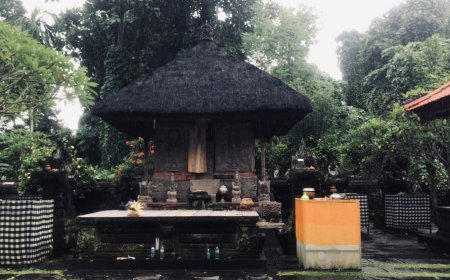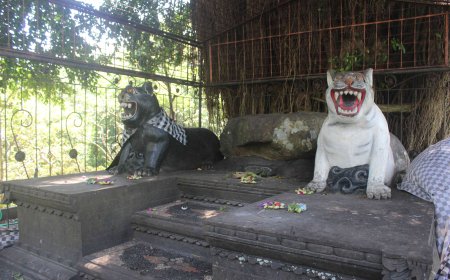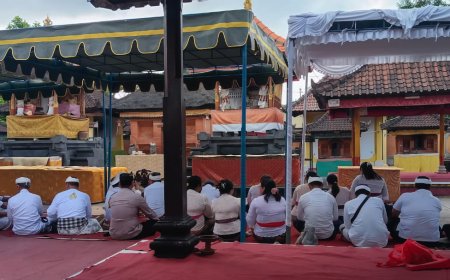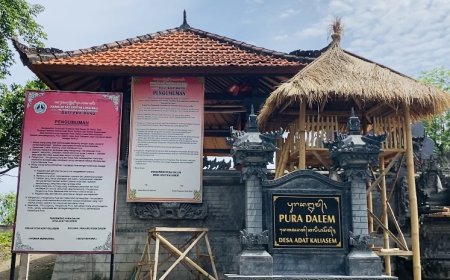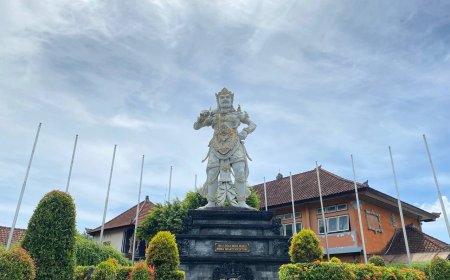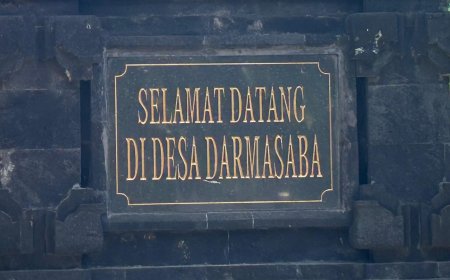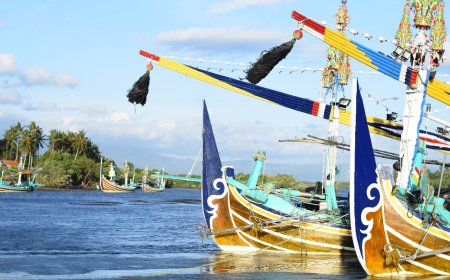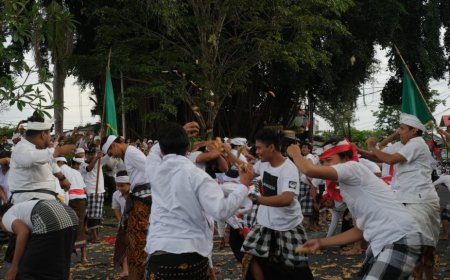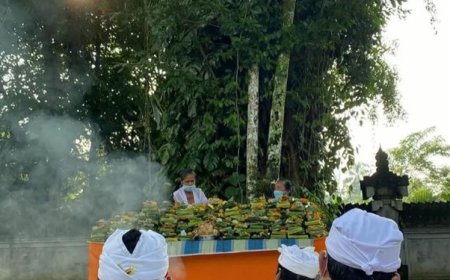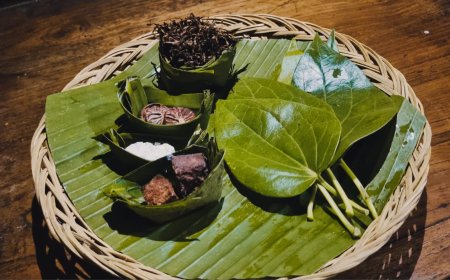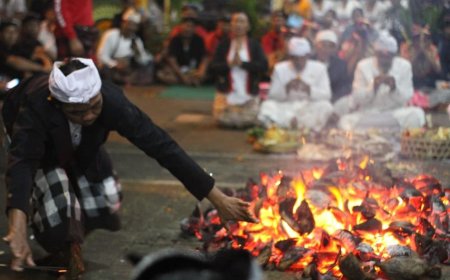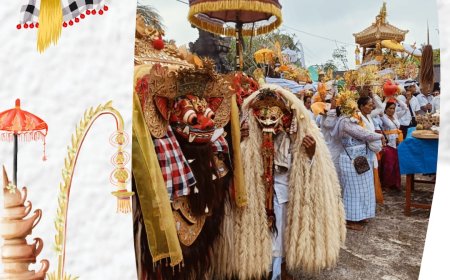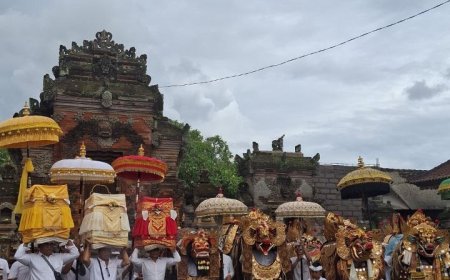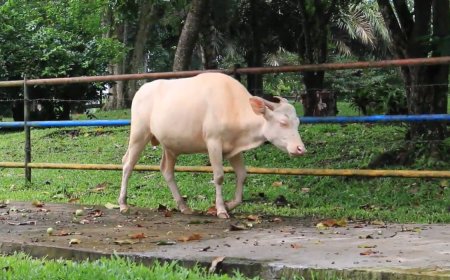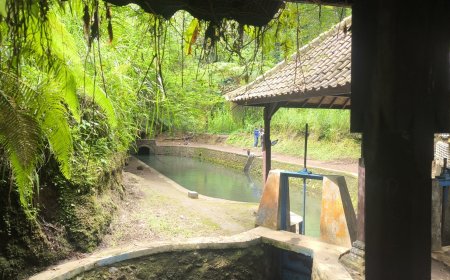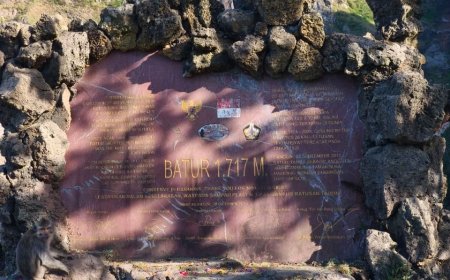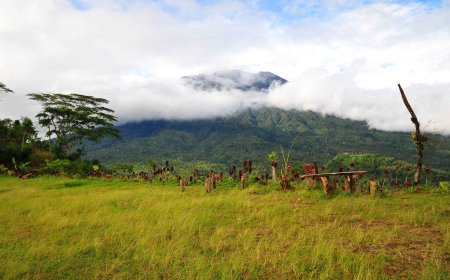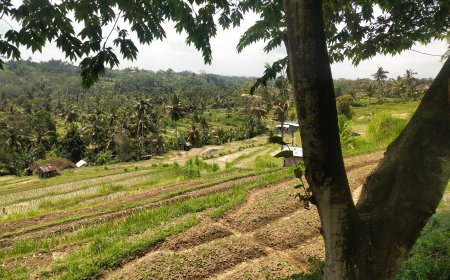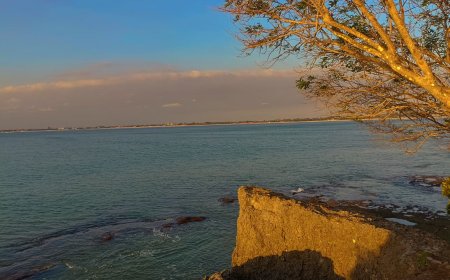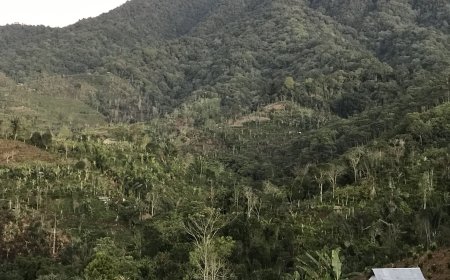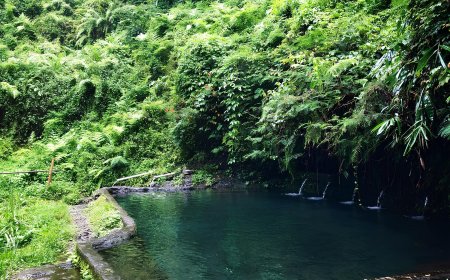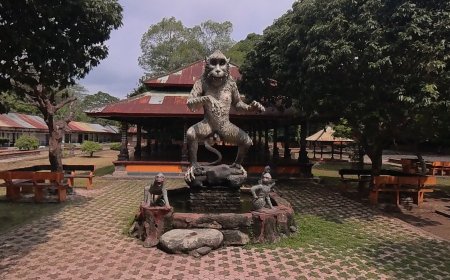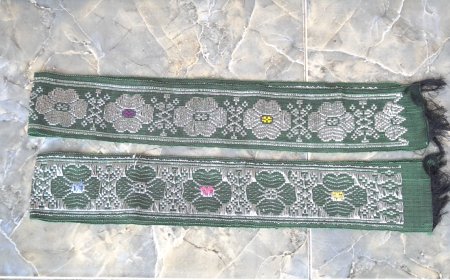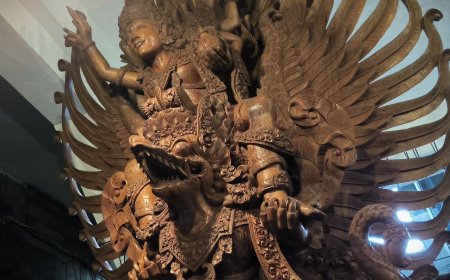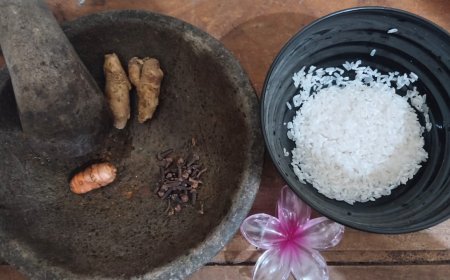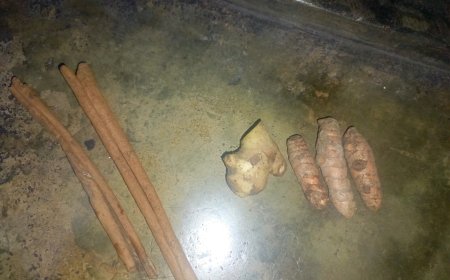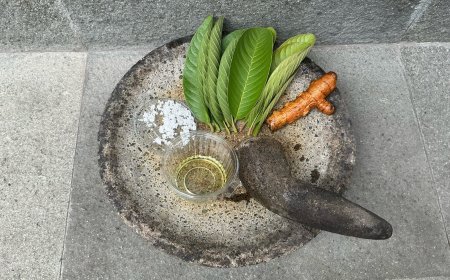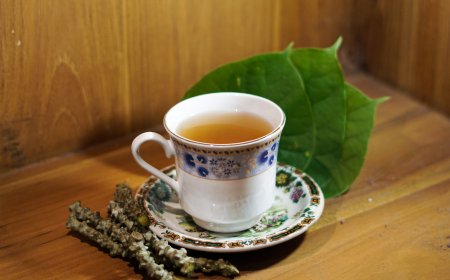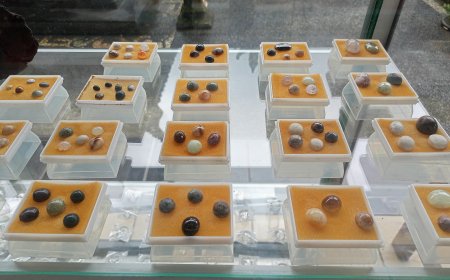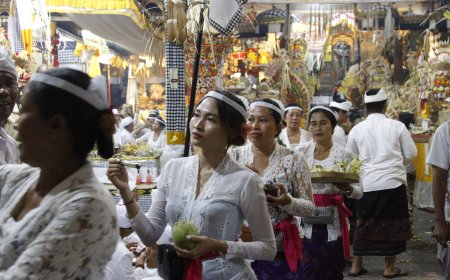Tedung Crafts in Mengwi Village, Bali: Preserving Cultural Heritage and Improving the Local Economy
Bali, with its cultural diversity and traditional heritage, has become a leading tourist destination for international travelers. Behind the stunning natural panorama, local potential emerges which is the backbone of the village economy, one of which is the tedung business in Mengwi Village, Bali.
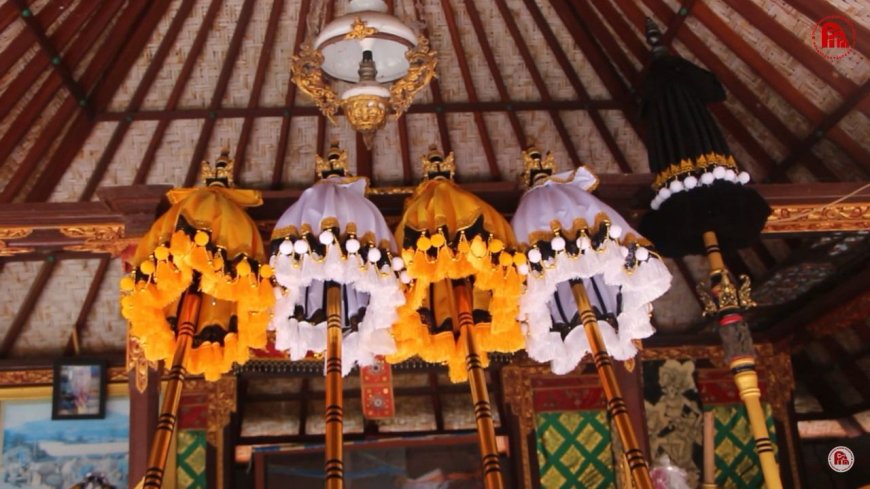
Tedung is a craft shaped like an umbrella as a type of religious yadnya ceremony which is especially used in Bali and has various shapes, sizes, colors, functions and terms. This cultural heritage not only provides a livelihood for local communities but also has a positive impact on the village economy and the welfare of micro-enterprise craftsmen.
Mengwi Village, which is located in Mengwi District, Badung Regency, Bali, has been known as a center for traditional Balinese tedung or umbrella crafts since 1985. There are 27 craftsmen who are not only involved in traditional tedung. But it has also developed into modified hoods which are used as decoration for tourist accommodation. These skills have been passed down from generation to generation, creating a rich and highly valued cultural heritage. The people of Mengwi Village dedicatedly carry out their profession as umbrella craftsmen, combining their hand skills and creativity to produce attractive works.
Various typical Balinese tedung crafts from Mengwi village are marketed throughout all areas of Bali, including in areas that are tourist destinations, both for traditional purposes and religious ceremony rituals, as well as for tourism needs, household and office decoration. With the large demand for tedung, many Mengwi village residents work as tedung craftsmen, including employing employees who come from other districts in Bali.

Tedung Craft Business (Photo Source: Editorial Collection)
This umbrella craft is not only an integral part of Balinese culture, but has also become a sought-after commodity by local people and tourists. The use of umbrellas in religious ceremonies in Bali has been a tradition that has lasted for years. Therefore, umbrellas are not just functional objects, but are also full of spiritual and symbolic values for the local community.
One of the tedung craftsmen in Mengwi Village is the family of Mrs. Gusti Agung Ayu Gita who started her business in the 80s, she is the 5th generation who has continued her family's business to this day. From the business management aspect, it can be explained that the Balinese tedung production process starts from making the frame, then the process of tying with thread, then covering or closing using a sewing machine, installing signs or other decorations, and setting and installing the pole and menur (snout).
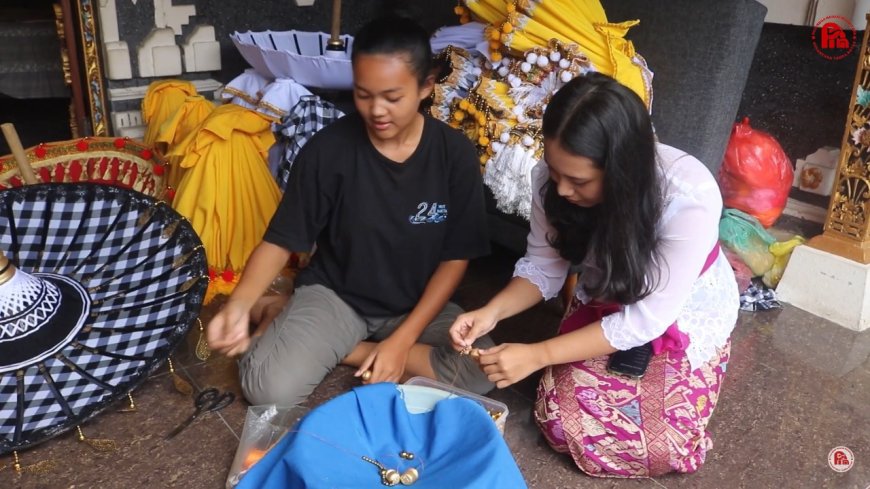
Tedung Making Process (Photo Source: Editorial Collection)
Looking at the stages of the process of making tedung, the involvement of labor at all stages is carried out with payment on a piece rate basis (per unit of output). The average sales turnover per month before the pandemic ranged from 10 to 15 million rupiah with the price per unit of Balinese tedung between 75 thousand and 1.5 million rupiah depending on the size and type of tedung. Meanwhile, during the pandemic, the turnover obtained was reduced by up to 70% of the average monthly turnover.
"During the approximately 50 years of running this tedung business, a lot of developments and improvements have occurred, starting from the many additions to motifs and modifications to umbrellas as well as the function of the tedung itself which is not only used for ceremonial purposes but also used as decoration in hotels. hotels and villas," said Mrs. Gusti Agung Ayu Gita as one of the tedung business owners in Mengwi Village.
Not only known domestically, Mengwi Village umbrella crafts also attract the attention of foreign tourists. These unique products have been successfully marketed to various countries, including Japan, Suriname and Cambodia. The beauty and uniqueness of the Balinese umbrellas from Mengwi Village is a special attraction, inviting interest and appreciation from various groups, including international travelers.
The positive influence of the tedung business is not only limited to the economic aspect, but also creates strong bonds between residents and enriches cross-cultural relations. Umbrella craftsmen are not just craftsmen, but also cultural ambassadors who bridge Bali's rich heritage with the outside world.

Tedung Making Process (Photo Source: Editorial Collection)
In accordance with field data and existing documents, the shape, height and width of existing tedungs and those made by craftsmen in several temples or regions still vary, both tedung agung and tedung robrob. To understand, the meaning or mention of the terms tedung Agung and robrob, for example, is differentiated from the lantern or iderider which is worn on the edge of the tukub or tedung roof in a dangling position.
In Tedung robrob, the edges are decorated with woven or embroidered threads or knitting using colored wool threads, such as black, white, yellow, red or green. Meanwhile, for the tedung Agung, the edge decoration is hung with colored cloth or prada, which is commonly called ider-ider. The hanging fabric consists of two layers or colors with the top or front fabric being shorter than the bottom or middle one.
It should be noted that when making a tedung, it is not only about displaying elements of art with various ornaments and attractive colors, but the craftsman must understand the correct philosophy of tedung in accordance with the teachings of Hindu literature. These teachings are contained, among other things, in the Asta-Kosala Kosali which includes: the appropriate and ideal types, shapes, sizes of tedung, kober, banners, especially those that are categorized as sacred.

Tedung Craft Business (Photo Source: Editorial Collection)
In an effort to preserve and develop this tedung business, Mengwi Village can create a training center for the younger generation so that they inherit this skill well. Support from the government and related parties can also expand the market for Balinese tedung products, so that the resulting economic benefits can be felt by more people.
Overall, the tedung business in Mengwi Village, Bali, is a clear example of how local cultural heritage can become a sustainable economic force. Through good preservation, promotion and collaboration efforts, Mengwi Village can not only maintain its cultural richness but also create a success story in developing micro-enterprises that have a positive impact on the welfare of the local community.
